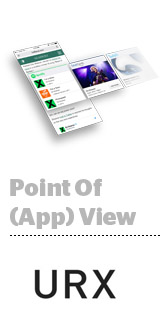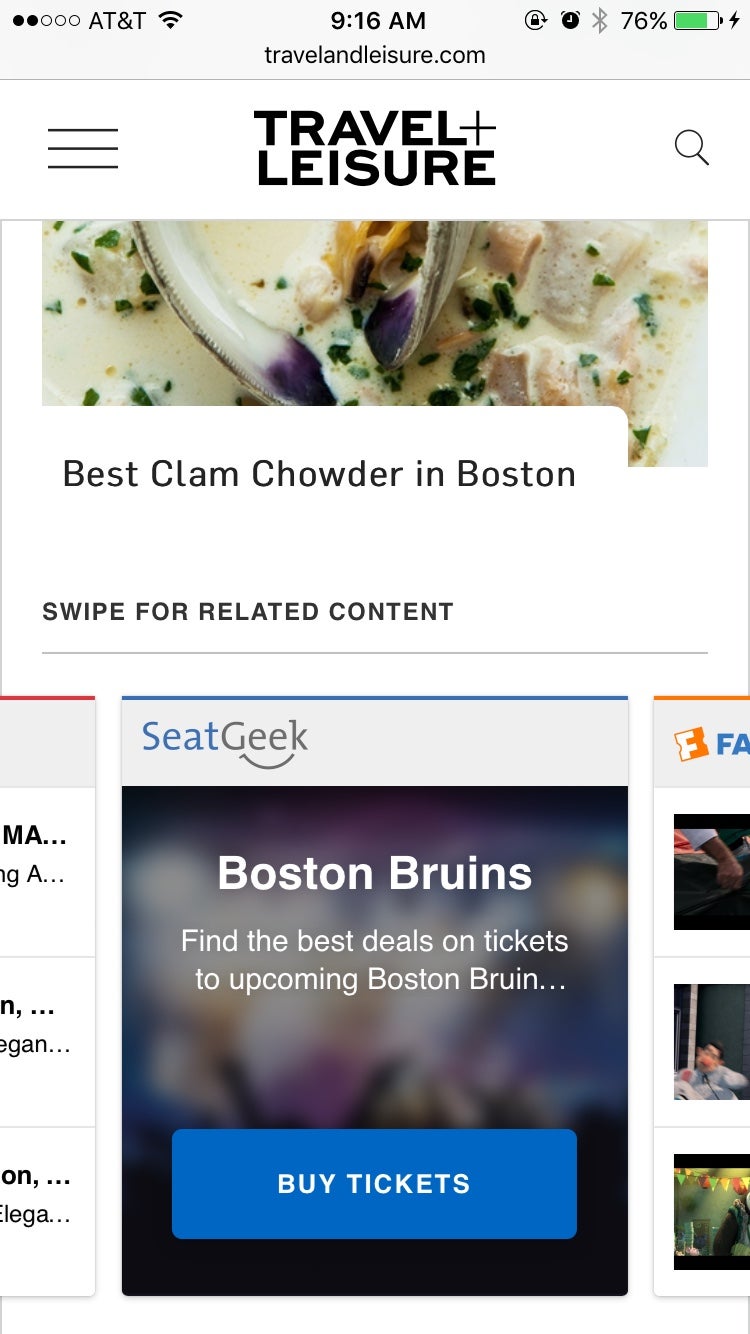 Publishers are always on the hunt for new ways to monetize without killing the UX.
Publishers are always on the hunt for new ways to monetize without killing the UX.
It’s a continual challenge, said Matt Blake, chief product officer at FanSided, a Time Inc.-owned network of more than 300 sports, entertainment and lifestyle sites dedicated to fandom.
FanSided sites generally only serve two banners – a leaderboard at the top of the page and an adhesion unit at the bottom.
“We’ve found that’s the best way to set up our mobile advertising without hampering the user experience,” he said. “But you can only go so far with monetizing two banners.”
And for a publisher like FanSided, whose traffic skews heavily mobile – roughly 67% as of January – banners alone aren’t going to cut it.
“Deep linking is where ads are headed,” Blake said. “I wouldn’t be surprised if in another two or three years even any banner ad you click on didn’t deep link into an app.”
In April, FanSided, which is a part of Time Inc.’s Sports Illustrated portfolio, first starting testing a deep-link-powered mobile ad unit from URX, which came out of beta on Tuesday.
Dubbed the AppView Carousel, the unit provides users with contextually relevant mobile content recommendations. Essentially, it’s a series of native cards for users to swipe through with calls to action that deep link directly into related content based on user intent.
The product, which was in beta for the last several months, is now generally available, and being used by the likes of Entertainment Weekly, The Huffington Post, Spin, Disqus and, of course, FanSided.
Publishers drop a tag onto their site which communicates with URX’s contextual search engine to determine what a particular page is a about. When a user hits the page, a search query is automatically sent to the search engine, which dynamically generates a series of cards to populate the carousel with native ads.
“The carousel is our version of a search engine results page,” said John Milinovich, CEO and co-founder of URX.
It’s install ads with an app discovery twist.
Say there’s an article about a new hit single on a music website. Users who scroll through will be presented with a series of cards related to the artist – one with the option to listen to the new song on a music-streaming app, for example, a second to buy tickets to the artist’s next concert through an event-booking app and a third to buy a T-shirt or other merchandise via a shopping app.
Although users can’t yet make purchases or listen to music directly within the unit itself, that functionality is on the road map for Q2 and Q3, Milinovich said.
 URX maintains the advertiser relationships and works with the likes of Spotify, OpenTable, Groupon, Airbnb, SeatGeek, Hotels.com, Lyft, Wish and mobile agency Fetch.
URX maintains the advertiser relationships and works with the likes of Spotify, OpenTable, Groupon, Airbnb, SeatGeek, Hotels.com, Lyft, Wish and mobile agency Fetch.
It’s a handy arrangement from the publisher perspective, Blake said, because it leaves them free to “sit back and think about revenue and products.”
During FanSided’s initial experiments with the carousel unit in April, it was performing well, but revenue was low, somewhere between $500 a $800 a month. But as URX has grown its inventory, revenue has ramped significantly, said Blake, who noted that FanSided is on track to bring in $20,000 in sales from the unit in January.
Blake’s also pitched the product to Sports Illustrated, which has handled FanSided’s direct sales since the acquisition, “and they’re starting to take a pretty serious look at it” for other properties in the portfolio.
The overall goal is to make the apps vs. mobile debate moot. Because it’s the content that matters, regardless of where it lives, said Milinovich.
“Information is information no matter where it is,” he said.
That does appear to be where things are trending: a sort of post-app world where content is content and apps are just containers for said content.
In August, deep-linking startup Branch came out with a product called Deepviews that provides users with previews of apps they haven’t downloaded yet, and the following month mobile app search company Quixey released a dynamic in-feed ad unit that updates in real time and deep links users to specific in-app pages.
And in November, Google announced that as part of its ongoing app indexing project it’s testing a feature that would allow users to stream apps directly to their phones, effectively enabling users to engage with apps they don’t already have without needing to download them first.













